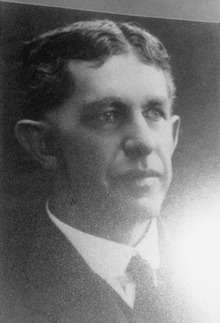Anton Breinl Centre
The Anton Breinl Centre for Public Health and Tropical Medicine (Anton Breinl Centre or the ABC) is a constituent discipline of the School of Public Health, Tropical Medicine and Rehabilitation Sciences, James Cook University, and specialises in public health and tropical medicine. The Anton Breinl Centre is one of only eight internationally recognised centres of excellence in tropical medicine worldwide and one of two in the Asia-Pacific Region.[1] The Anton Breinl Centre incorporates a World Health Organization (WHO) Collaborating Centre (CC) for the Elimination of Lymphatic Filariasis and Soil Transmitted Helminthiases (WHO CC Number AUS 68). It also incorporates a World Safety Organization Collaborating Centre, which has several designations, including Disaster Health and Emergency Response, Injury Prevention and Occupational Health and Travel Safety and Health.[2]

The Anton Breinl Centre is a renowned research-led postgraduate centre, which presents unique opportunities for postgraduate study of the major disciplines related to public health and tropical medicine. Anton Breinl Centre also has one of the largest Master of Public Health programs in Australasia and is one of only a small number of Schools in Australia to receive funding from the Commonwealth Public Health Education and Research Program.[3]
History
The Anton Breinl Centre can trace its history back to the establishment of Australia's first medical research institute, the Australian Institute of Tropical Medicine (AITM), in 1910.[4] Dr Anton Breinl, formerly Head of the Runcorn Laboratories of the Liverpool School of Tropical Medicine, was appointed the first Director of the AITM, which was based in Townsville, and commenced work on 1 January 1910. The original AITM building was opened in 1912 and is now heritage-listed.[5]
The AITM was moved to Sydney in 1930 and became incorporated into the Sydney School of Public Health and Tropical Medicine.
Following the release of the Kerr White Report into public health in 1986, a centre for Tropical Health and Medicine was established in 1987 as a Tropical Health Surveillance Unit in Townsville, Australia. The new institute was reestablished in the original AITM Building, which was named the Anton Breinl Centre for Tropical Health and Medicine in 1990, in recognition of the Inaugural Director of the AITM. Apart from its academic pursuits, the Anton Breinl Centre was also the founding site of a new professional organisation, The Australasian College of Tropical Medicine, on 29 May 1991.
The Anton Breinl Centre for Tropical Health and Medicine was renamed the Anton Breinl Centre for Public Health and Tropical Medicine in 1997 in recognition of the growing importance of public health training at the Centre. The Anton Breinl Centre started moving its operations from the original AITM Building in 2004 to the main campus of James Cook University to a new building in the Medical School precinct. A new teaching annex of the Anton Breinl Centre was completed in 2005, as was the move to the main campus.
Courses offered
The following courses are offered by the Anton Breinl Centre:[6]
- Doctor of Public Health (DrPH)
- Doctor of Public Health Studies (DrPHSt)
- Doctor of Philosophy (PhD)
- Master of Public Health and Tropical Medicine (MPH&TM)
- Master of Public Health (MPH), including generic and specialist streams
- Master of Science in Tropical Medical Science (MSc)
- Postgraduate Diploma of Tropical Medicine and Hygiene (DTM&H)
- Postgraduate Diploma of Public Health and Tropical Medicine (DipPH&TM)
- Postgraduate Certificate of Aeromedical Retrieval (PGCAeMedRetrieval)
- Postgraduate Certificate of Disaster and Refugee Health (PGCDisastRefugHlth)
- Postgraduate Certificate of Health Promotion (PGCHlthProm)
- Postgraduate Certificate of Infection Control (PGCInfCont)
- Postgraduate Certificate of Public Health (PGCPubHlth)
- Postgraduate Certificate of Travel Medicine (PGCTravelMed)
References
- Cook GC, Zumla AI (eds). Manson's Tropical Diseases. 21st edn. Saunders Ltd, 2002.
- World Safety Organization. WSO Collaborating Center Global Database URL. "Archived copy". Archived from the original on 2010-08-23. Retrieved 2009-10-31.CS1 maint: archived copy as title (link)
- Commonwealth Department of Health and Ageing. The Public Health Education and Research Program (PHERP) Review. Canberra: Australian Government, 2005.
- Leggat PA. Leading Article: A college of tropical medicine for Australasia. Medical Journal of Australia. 1992; 157: 222-223.
- "James Cook University Department of Public Health and Tropical Medicine Building (entry 600889)". Queensland Heritage Register. Queensland Heritage Council. Retrieved 1 August 2014.
- Anton Breinl Centre. 2010 Postgraduate Student Handbook. Townsville: James Cook University, 2007. URL. http://www.jcu.edu.au/phtmrs/idc/groups/public/documents/handbook/jcuprd_055041.pdf%5B%5D (accessed 7 June 2010)
External links
- School of Public Health, Tropical Medicine and Rehabilitation Sciences
- Anton Breinl Centre
- Email. phtmrsATjcu.edu.au Anton Breinl Centre (please note that @ has been replaced by AT to help inhibit email trawling programs)
- The Australasian College of Tropical Medicine
- The World Safety Organization